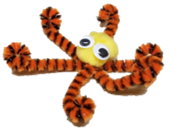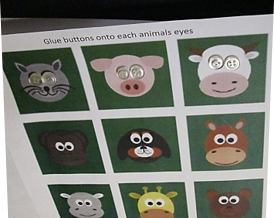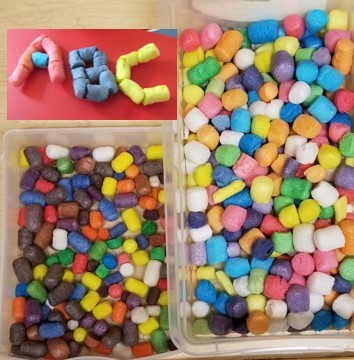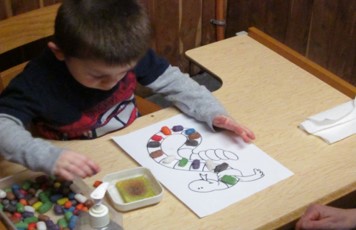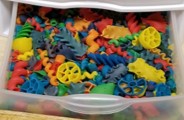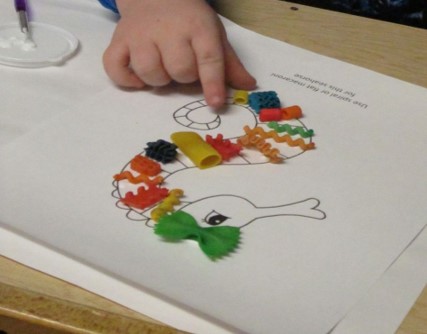Helping children learn the most from their experiences with hand crafts takes selective skills. This may be especially true when those children may have visual perceptual and hand function deficits. Setting up a workstation in advance helps to minimize stress for the caregiver. This strategy also adds to the likelihood of success for the child because the attention will then focus on the child and not on how to manage the supplies.
When you first set up the crafting workstation you can plan on spending roughly $16.00 for a storage tower at Walmart, or $1 for each stackable storage drawer or shoe box at Dollar Tree. Plan on spending $1 for each crafting supply that is purchased at Dollar Tree. A modest workstation would cost about $12 to set up.
Three key ideas come to mind when setting up a crafting workstation.
- Set Up and Storage area
- Supplies
- Rotating out old supplies and rotating in supplies for the current project
Set Up
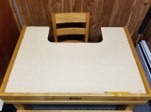
For the best outcomes of your crafting sessions with your child, you will need to be intentional about selecting space for the work. Try to find an out-of-the-way area that tends to be a quiet area in your home. This will serve to reduce distractions and allow for better focus during your crafting sessions. It is also helpful to have a child sized table and chair for your area.
Storage Area
Using a small to medium sized storage container works best since the size will force you to organize and limit the contents. When the child looks to see what the craft project will be, they will begin to associate what needs to be done as they see items that have been set out.
I prefer to use small flexible towers such as the ones shown below. They come in different sizes. They are lightweight, but stable. The drawers are flexible and can easily be pulled out or pushed back in.
Alternately, shoe boxes also work well.
Supplies
Supplies will vary widely depending upon the age of the child and the project you will be working on. However, basic supplies to have on hand might include the following items. I usually buy supplies at Dollar Tree stores.
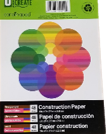
A pad of half sized construction paper is helpful for small hands. Using the smaller paper increases the frequency of hand turning moves during the project. A pad of half-sized construction paper is available at most Dollar Tree stores.
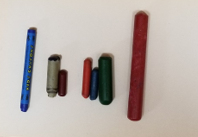
An assortment of crayons works well with early learners who do not yet handle a pencil skillfully. The crayons are more resistive than pencils or markers and thus provide more sensory feedback for the fingers. Dollar Tree is a great place to get crayons of different sizes.

Tacky Glue has been a long time favorite of mine because its weight and thickness provides greater sensory input for the fingers. We keep the glue in a small tub and use Q-Tips, rather than paint brushes. This set up requires greater attention to visual motor skills for the child. Tacky Glue, Q-tips, and small containers are available at Dollar Tree Larger sized bottles of Tacky glue can generally be found at local craft stores.
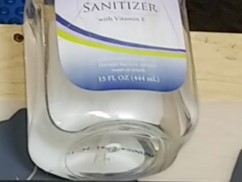
Where there is glue, it’s a good idea to have hand sanitizer around. Some children who are sensitive to touch sensations. They will engage activities that require touching sticky items such as glue and paint, if they know that they can use the sanitizer to wipe away the unwanted touch feelings with the sanitizer. Small bottles of hand sanitizer are available at Dollar Tree and Family Dollar
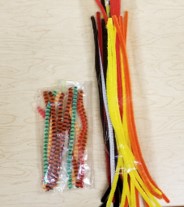
Pipe cleaners of different lengths are also useful to have on hand. Their flexible, yet resistive features provide sensory feedback to help strengthen hands. Pipe cleaners are also available at Dollar Tree Look for seasonal colors and styles when the seasons change.
Eyes are another favorite craft item when working with children. This assortment offers different sizes and colors one snack bag. Use of differences in size is intentional as this feature helps the children learn to vary fingertip pinch strength and flexibility. Dollar Tree sells bags of googly wiggle eyes. Amazon lists a box of 1500 eyes of different colors and sizes for $10.
It is helpful to have an assortment of beads, buttons, and feathers on hand to accessorize the finished product. Feathers can be used to offer a different type of grip due to the kind of sensory input they offer to the fingers. These supplies are valued for their differences in size, shape and color. Each one is stored in snack sized zip lock bags. Large sized manipulatives are not always the best, since they do not allow fingers to learn use of different grips and how to vary grip strength. Simple beads and buttons are available at Dollar Tree. Look for their stores that feature Crafters Square for expanded craft supplies. Larger bags of beads, buttons, and feathers are available at Lakeshore Learning Materials and at Discount School Supplies for $10 – $12
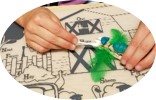
The clothespin body of a winged creature is being held with one hand. The fingers of the other hand hold a Q-tip that is applying glue for the creatures’ eyeball.
It’ s handy to have Magic Nuudles available. As you can see, they come in different sizes. Nuudles stick to each other and flat surfaces with only a slight bit of water. Nuudles work well with outlining shapes and filling in pictures to help teach visual tracking and other features of eye-hand coordination. Magic Nuudles are available from Discount School Supplies for about $11 per bag. Similar sized bags and boxes of Nuudles are available at Amazon.
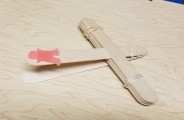
Craft sticks in all sizes can be made into simple, yet fun loving projects such as the catapult shown. Craft sticks of various sizes and colors can be found at Dollar Tree. Lakeshore Learning Materials carries jumbo, regular sized, and colored craft sticks for $2.99 per pack
Colored macaroni is a wonderful medium to glue onto a variety of projects. The hard pieces with different sizes and shapes provide excellent sensory feedback for development of finger skills. Colored macaroni can easily be used for outlining and filling in coloring projects. Colored Macaroni is available at Lakeshore Learning Materials for about $9 per bag. Alternately this craft supply is also available at Amazon for about $14 per box.
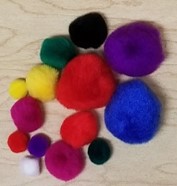
Pompoms are another favorite that comes in a variety of colors and sizes. Packages are easily available at Dollar Tree and local craft shops. Working with pompoms can help children to learn to adjust pinch strength when working with soft craft materials.
Rotating Supplies
As you set up your craft workstation, you will want to remember to rotate items. Items that are not used on a daily basis are ideally stored elsewhere. This leaves space in the workstation for items used for the current project. In this way, the work area remains uncluttered and intentional for the youngster who is busily engaged in the craft adventure that is presently at hand.
Your sessions with the Crafting Workstation will run more smoothly if you keep a small supply of worksheets on-hand. I keep folders of seasonal worksheets nearby for those times when craft activities turn into frustration for the child. At times, an activity will turn out to be either too easy or too hard for the child, and you will want to finish the session on a positive note. Use of a handy worksheet will be helpful at these times.
I find the following links to be helpful resources for free worksheets. However, a word of caution is recommended. When you switch to a worksheet, you’ll still want to provide an emphasis on fine motor skills. Therefore, you’ll want to look for worksheets that focus on activities that emphasize fine motor elements. Coloring worksheets that can be filled in or outlined with craft materials usually fit this criteria. Try worksheets at the sites below:
https://www.allkidsnetwork.com/
https://www.jumpstart.com/parents/worksheets
https://www.education.com/worksheets




